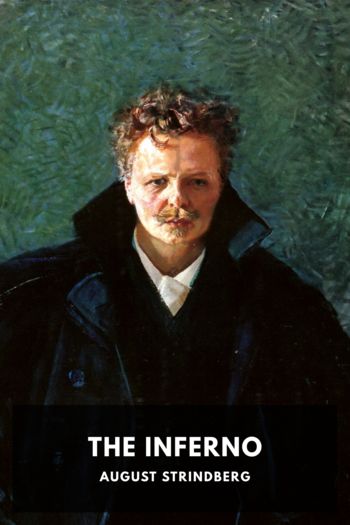The Red Room, August Strindberg [the mitten read aloud txt] 📗

- Author: August Strindberg
Book online «The Red Room, August Strindberg [the mitten read aloud txt] 📗». Author August Strindberg
Another important member of the staff was the dramatic critic. He had received his education and qualified at a recruiting bureau in X-köping; had fallen in love with a “star” who was only a “star” in X-köping. As he was not sufficiently enlightened to differentiate between a private opinion and a universal verdict, it happened to him when he was for the first time let loose in the columns of the Grey Bonnet that he slated the greatest actress in Sweden, and maintained that she copied Miss ⸻, whatever her name was. That it was done very clumsily goes without saying, and also that it happened before the Grey Bonnet had veered round. All this made his name detested and despised; but still, he had a name, and that compensated him for the indignation he excited. One of his cardinal points, although not at once appreciated, was his deafness. Several years went by before it was discovered, and even then nobody could tell whether or no it had any connection with a certain encounter, caused by one of his notices, in the foyer of the Opera House, one evening after the lights had been turned down. After this encounter he tested the strength of his arm only on quite young people; and anybody familiar with the circumstances could tell by his critique when he had had an accident in the wings, for the conceited provincial had read somewhere the unreliable statement that Stockholm was another Paris, and had believed it.
The art critic was an old academician who had never held a brush in his hand, but was a member of the brilliant artists club Minerva, a fact which enabled him to describe works of art in the columns of his paper before they were finished, thereby saving the reader the trouble of forming an opinion of his own. He was invariably kind to his acquaintances, and in criticizing an exhibition never forgot to mention every single one of them. His practice, of many years’ standing, of saying something pretty about everybody—and how would he have dared to do otherwise—made it child’s play to him to mention twenty names in half a column; in reading his reviews one could not help thinking of the popular game “pictures and devices.” But the young artists he always conscientiously forgot, so that the public, which, for ten years had heard none but the old names, began to despair of the future of art. One exception, however, he had made, and made quite recently, in an unpropitious hour; and in consequence of this exception there was great excitement one morning in the editorial office of the Grey Bonnet.
What had occurred was this: Sellén—the reader may remember this insignificant name mentioned on a former, and not a particularly important occasion—had arrived with his picture at the exhibition at the very last moment. When it had been hung—in the worst possible place—for the artist was neither a member of the Academy nor did he possess the royal medal—the “professor of Charles IX” arrived; he had been given this nickname because he never painted anything but scenes from the life of Charles IX; the reason again for this was that a long time ago he had bought at an auction a wine glass, a tablecloth, a chair, and a parchment from the period of Charles IX; these objects he had painted for twenty years, sometimes with, sometimes without, the king. But he was a professor now and a knight of many orders, and so there was no help for it. He was with the academician when his eye fell on the silent man of the opposition and his picture.
“Here again, sir?” He put up his pince-nez. “And this, then, is the new style! Hm! Let me tell you, sir! Believe the word of an old man: take that picture away! Take it away! It makes me sick to look at it. You do yourself the greatest service if you take it away. What do you say, old fellow?”
The old fellow said that the exhibition of such a picture was an impertinence, and that if the gentleman would take his kindly meant advice, he would change his profession and become a signboard painter.
Sellén replied mildly, but shrewdly, that there were so many able people in that profession, that he had chosen an artistic career where success could be obtained far more easily, as had been proved.
The professor was furious at this insolence; he turned his back on the contrite Sellén with a threat which the academician translated into a promise.
The enlightened Committee of Purchases had met—behind closed doors. When the doors were opened again, six pictures had been bought for the





Comments (0)